History of Kaluga
14th Century
Kaluga was first mentioned in 1371 in a letter of Grand Duke Algirdas of Lithuania to the Patriarch in Constantinople, complaining how Grand Prince Dmitri Donskoy had recently captured the city. Even though Kaluga by then was already a sizeable settlement and therefore must have been founded earlier, this date is considered the date of its foundation. In 1389 Grand Prince Dmitri Donskoy died and in his will Kaluga is mentioned once more as part of the Mozhaisk Principality, an appendage of the Grand Duchy of Moscow.
15th Century
Great Standoff on the River Ugra
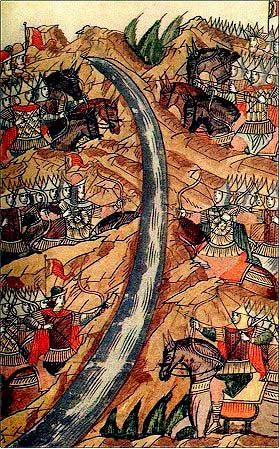
Kaluga's location near the River Oka, close to where the River Ugra flows into it, meant that it occupied a strategic position for the defence of the Grand Duchy of Moscow and so a fortress was built in the city. In 1480 the Great Standoff on the River Ugra took place near to Kaluga. Khan Akhmat of the Golden Horde attempted to extract revenge on Grand Prince Ivan III of Rus for failing to pay the tribute and hoped to cross the Oka near Kaluga. However Russian troops were able to prevent this and the Russian and Tatar armies faced each other on either side of the River Ugra. Eventually, as Akhmat's Polish-Lithuanian allies failed to appear and Ivan III was successful in bringing more reinforcements to the area, the Tatars decided to retreat. This victory for Russia represented a less than dramatic end to more than 200 years of Mongol-Tatar rule over Russia.
16th Century
St Laurentius of Kaluga
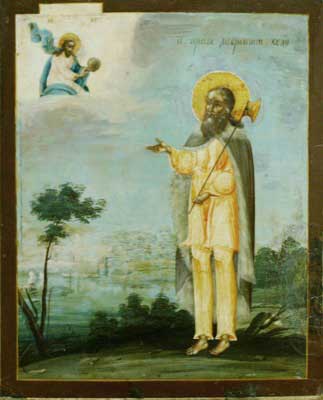
In 1505 Grand Prince Ivan III of Rus gave his son Simeon Kaluga as an appendage. Simeon died in 1518 without issue and the Kaluga appendage ceased to exist with him. In 1512 a holy fool by the name of Lavrenti, who was known for walking around barefooted and in light clothing all year round, warned Prince Simeon of Kaluga of an approaching Crimean Tatar army. Although the Tatars were successful in raiding other Russian towns when they reached Kaluga, Simeon was well prepared and was able to defend the city. Lavrenti was credited with saving the city and when he died in 1515, he was buried in a wooden church in the city. Afterwards the Svyato-Lavrentiev Monastery was founded at the place of Lavrenti's burial. Lavrenti was eventually canonised as St Laurentius (Lavrenti) of Kaluga and made a patron saint of the city.
17th Century
Time of Troubles
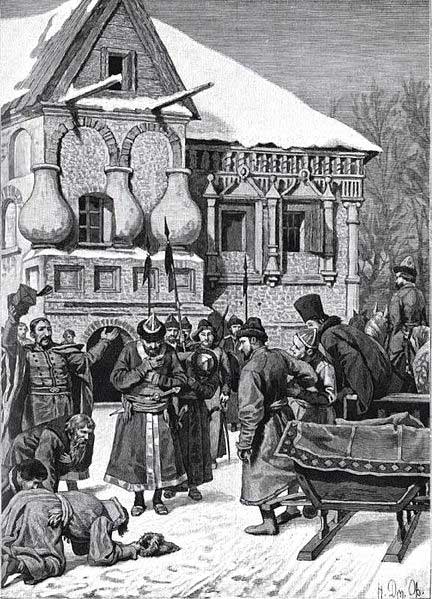
In December 1606 the rebels lead by Ivan Bolotnikov fled to Kaluga after their siege of Moscow collapsed. Whilst here Tsarist troops besieged them and they were only able to escape and flee on to Tula once reinforcements in the form of Zaporozhian Cossacks arrived. In December 1609 the Second False Dmitri was forced to flee his camp at Tushino for Kaluga. It was here a year later in December 1610 that he was murdered by Prince Pyotr Urusov, a Christianised Tatar commander. In 1617 Prince Dmitri Pozharsky successfully led the defence of Kaluga during the Polish campaign against Moscow. In 1654 Left-Bank Ukraine was incorporated into Russia and Kaluga lost its defensive significance. In 1700 Kaluga's wooden kremlin burned to the ground and was never rebuilt.
18th Century
Reform
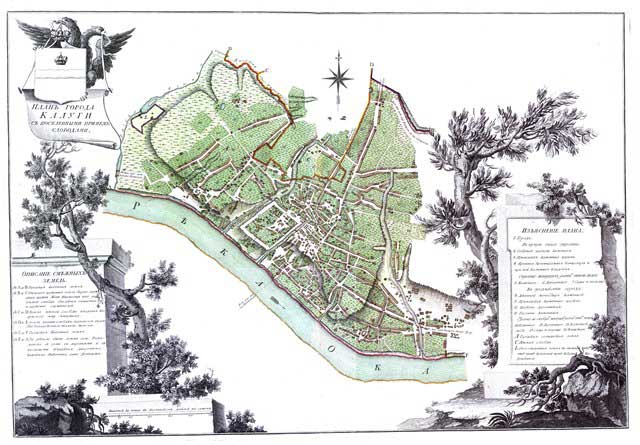
In 1708 under Peter the Great's administrative reforms Kaluga became part of the Moscow Governorate and in 1719 it was elevated to the centre of the Kaluga Province within the Moscow Governorate. During the century the city frequently suffered from famine and was burned to the ground several times during fires. In 1771 plague broke out in the city. In 1775 Empress Catherine the Great visited Kaluga and later in 1776 made it the centre of the newly established Kaluga Viceroyalty. In 1796 Emperor Paul I elevated the Kaluga Viceroyalty to a governorate. A regulated city plan was also adopted for Kaluga and stone buildings were constructed which in turn led to the city's industrial growth.
19th Century
Napoleonic War
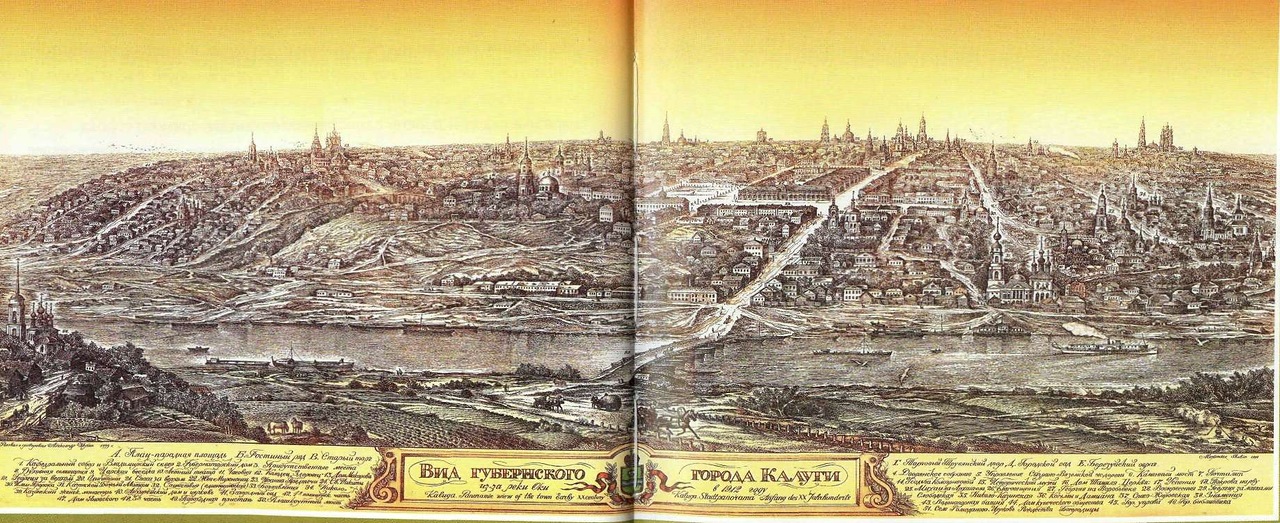
Kaluga played an important role during Napoleon's Invasion of Russia in 1812. The city served as one of Russia's largest supply bases. Napoleon hoped to capture Kaluga and its supplies on his retreat from Moscow. However the Russians succeeded in blocking Napoleon at the nearby Battle of Maloyaroslavets which denied the already hungry and tired Grand Armée much needed supplies and forced them back via the Old Smolensk Road which had already been devastated by the French advance and the Russian scorched-earth policy.
20th Century
Konstantin Tsiolkovsky
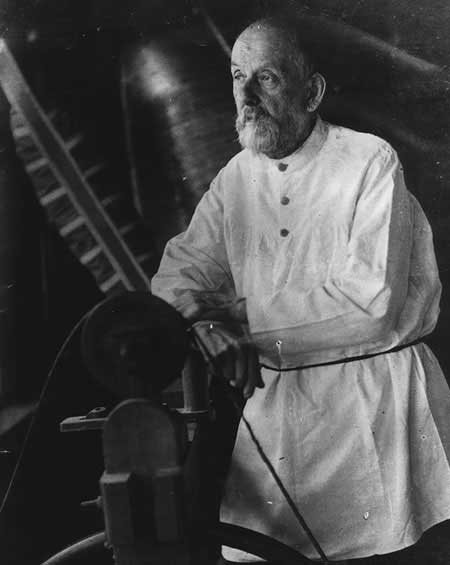
In 1892 the scientist Konstantin Tsiolkovsky moved to Kaluga and continued there his research into cosmonautics and rocketry. Tsiolkovsky lived with his family as somewhat of a recluse on the outskirts of the city until his death in 1935. Although by the end of his life the importance of Tsiolkovsky's work was recognised, it was only after his death that Tsiolkovsky was deemed the founding father of theoretical cosmonautics when his work inspired Sergey Korolev, the lead engineer and designer during the Soviet Space Race. This in turn led to Kaluga being called the Cradle of Cosmonautics.
Second World War
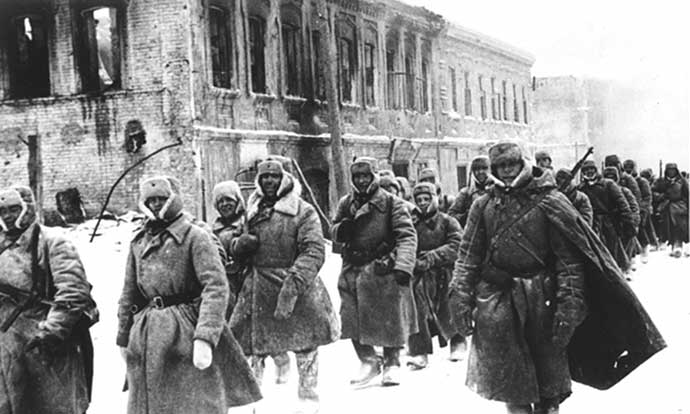
On 13 October 1941 Kaluga fell to the Nazis. Upon their retreat from the city, the Soviets were not able to destroy the city's infrastructure and so it fell into enemy hands. The Nazis were able to get the city's electricity supply working and to print propaganda at the city's printing press. A Jewish ghetto was also organised in the city for the just over 150 Jews located in the city. The occupation was not to last for long and the city was liberated on 30 December 1941 during the Kaluga Operation of the Battle of Moscow. On their retreat from the city the Nazis burned down many houses leaving many of the citizens without shelter. In 1944 Kaluga became the administrative centre of the Kaluga Region.


 History
History